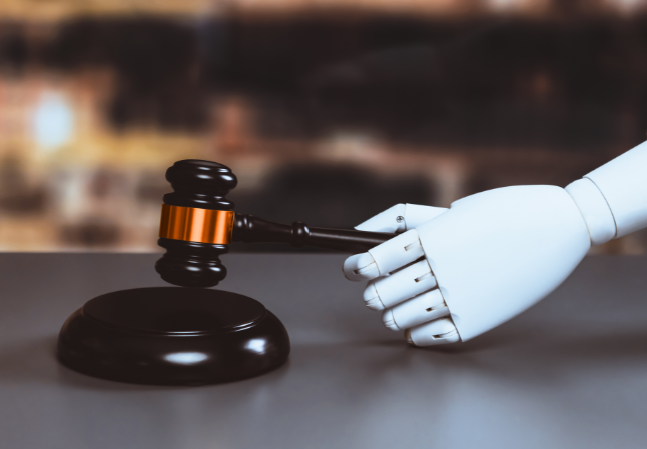Welcome! Save 30% on all CLE, CPE, and Professional Skills webinars, plus 15% off any annual pass with code CYBER2025
About the Course
Introduction
This CLE course will guide patent counsel to prepare and submit declarations during the prosecution of U.S. patent applications to support the desired claim interpretation, non-obviousness, and Section 112 positions.
Description
In the post-AIA patent world, practitioners face the genuine possibility that patents issuing from applications they have drafted or prosecuted will be involved in post-grant proceedings, inter partes review (IPR) or post-grant review (PGR). To date, the institution rate of the Patent Trial and Appeal Board for IPRs is 66% (5688/8663) and so far, in the granted petitions, 72% (27774/38580) of the challenged claims have been found unpatentable. For PGRs, the number of petitions filed is much lower, but the institution grant rate is 59% (86/147) and, on a per case basis, all claims were held unpatentable in 70% of the instituted cases.
Practitioners must respond while also maintaining best practices during prosecution in the context of potential district court litigation. A suggestion is to act during prosecution to strengthen potentially critical patent applications against PTAB scrutiny through the use of declarations. The specification and file history are fair game to present in the POPR, providing a means to avoid institution of an IPR or PGR, or possibly even to achieve settlement.
Listen as our authoritative panel proposes concrete suggestions for preparing and submitting declarations during prosecution of U.S. patent applications to support the desired claim interpretation, non-obviousness, and Sec. 112 positions. The panel will offer best practices to solidify novelty, non-obviousness, enablement, and written description positions during prosecution to strengthen patents against later post-grant challenges.
Presented By

Ms. Burgy focuses on opinion work, client counseling, patent prosecution and management, and litigation in the chemical, pharmaceutical, and biotechnology arts. She counsels her clients on a diverse range of patent issues. Ms. Burgy assists clients on single-patent issues as well as complex matters involving multiple patents and applications requiring ongoing advice on patent portfolio strategy and development, with an eye towards litigation. Ms. Burgy has assisted clients in the early stages of development through due diligence and patent portfolio analysis.

Dr. Feldstein, Ph.D., focuses on U.S. district court litigation, primarily concerning the enforcement of U.S. patent rights and trade secret issues, and post-grant trial proceedings at the USPTO, including inter partes review (IPR) and post grant review (PGR). He maintains an active patent prosecution practice, preparing and prosecuting U.S. patent applications on behalf of domestic and foreign clients. Dr. Feldstein also provides opinions and strategic guidance to clients on infringement, validity, enforceability, and clearance matters. His practice encompasses a range of technologies, including pharmaceuticals, biochemistry, polymers, small molecule chemistry, optics, and medical and analytic devices.

Mr. Irving has 47 years of experience in the field of IP law. His practice includes due diligence, patent prosecution, reissue and reexamination, patent interferences, and counseling, including prelitigation, Orange Book listings of patents covering FDA-approved drugs, and infringement and validity analysis in the chemical fields, as well as litigation. He has served as lead counsel in many patent interferences.

Dr. MacAlpine practices patent procurement, due diligence investigations, opinion work, and client counseling, primarily in the chemical and pharmaceutical areas. She has extensive experience in handling patent matters before the U.S. Patent and Trademark Office (USPTO), including post-grant proceedings specifically IPRs, appeals, and oral hearings at the PTAB; drafting and prosecution of patent applications; reissue and reexamination proceedings; and interferences.
-
This 90-minute webinar is eligible in most states for 1.5 CLE credits.
-
Live Online
On Demand
Date + Time
- event
Wednesday, April 8, 2020
- schedule
1:00 p.m. ET./10:00 a.m. PT
- Prosecution declarations
- Possible declarants
- When to use
- Use of prosecution declarations
- Claim construction
- State of the art/level of ordinary skill in the art
- Inherency position
- Objective evidence of non-obviousness
- Enablement
- Written description/show possession of subject matter
- Considerations
- "Big picture" of a patent at issue
- Patent owner's business objectives with the patent at issue
- Litigation/post-grant proceedings of related applications/patents
- Therasense
- Evidentiary issues (especially hearsay) of a prosecution declaration when used in a PTAB proceeding
- "Big picture" of a patent at issue
The panel will review these and other key issues:
- How can practitioners prepare and submit declarations during prosecution to strengthen the application against the threat and/or efficacy of a third-party's post-grant challenges?
- What can patent owners do to try and obtain the desired claim construction in both litigation and post-grant proceedings?
- How can practitioners introduce substantial grounds for patentability under Sections 102, 103, and 112 in the specification and prosecution history so that IPRs and PGRs are either denied or otherwise ineffective against the challenged instituted claims?
Unlimited access to premium CLE courses:
- Annual access
- Available live and on-demand
- Best for attorneys and legal professionals
Unlimited access to premium CPE courses.:
- Annual access
- Available live and on-demand
- Best for CPAs and tax professionals
Unlimited access to premium CLE, CPE, Professional Skills and Practice-Ready courses.:
- Annual access
- Available live and on-demand
- Best for legal, accounting, and tax professionals
Unlimited access to Professional Skills and Practice-Ready courses:
- Annual access
- Available on-demand
- Best for new attorneys
Related Courses

Discretionary Denials in IPRs: New Framework, Navigating the Evolving Landscape, and Strategies for Survival
Thursday, November 20, 2025
1:00 p.m. ET./10:00 a.m. PT

Patent Drawings: Navigating the Evolving Global Colored Drawing Requirements Landscape
Thursday, January 8, 2026
1:00 p.m. ET./10:00 a.m. PT



